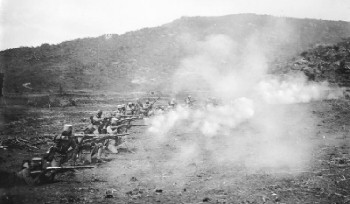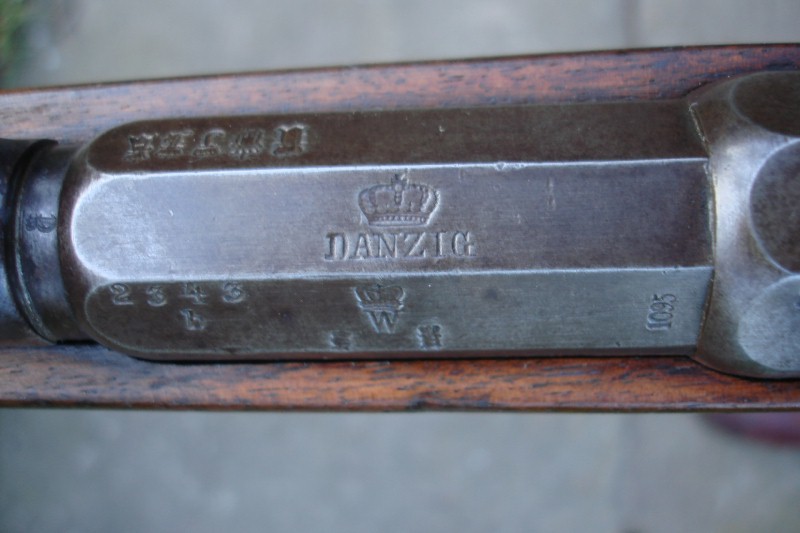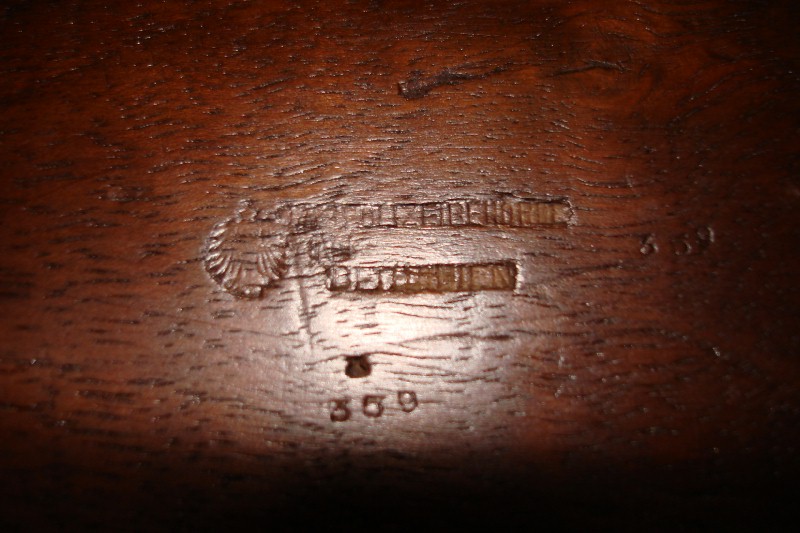|
Mauser Jägerbüchse 1871 used in South West Africa
Photos © Chris
Wood

Calibre: 11mm
Length: 130cm
Barrel Length: 80.5cm
Magazine: N/A Single Shot
The Jägerbüchse was a light infantry
version of the Gew71 and differed mainly in that it was 5cm
shorter than the standard rifle. It was the main weapon of the
askaris of the German East African Schutztruppe from the time of
the Wissmanntruppe up until the First World War.
| |
|
|
|

East African Schutztruppe
Askaris firing the JB71
Note the large cloud of smoke produced.
Photo by Walther
Dobbertin from Bundesarchiv /
WikiCommons |
|
While its relatively large calibre
made it ideal for use stopping charges of tribesmen, it was
obsolete by comparison with the British, Belgian and Portuguese
weapons of the First World War.
Not only was it a single shot
weapon but like the other 1871 series Mausers, it was
particularly unhelpful in that its ammunition gave up a large
flame and a cloud of smoke when fired thus revealing the firer's
position by both night and day. The cloud of smoke then often
obscured the enemy's position before a second volley
could be fired.
As well as being used by the askari
of the East Africa, the JB71 was used by African troops in the Schutztruppe and Polizeitruppe
of Cameroon and Togo prior to the introduction of the Kar98az. It also saw limited use by the South
West African Schutztruppe and Landespolizei, again prior to the
introduction of the Gew98 and Kar98. |
| |
|
|
This particular JB71 was made in
Danzig (modern Gdansk, Poland) in 1880 and has an issue stamp
identifying it as probably having been used by a
Schutztruppe police unit at Bethanien in South
West Africa. See below for more information and close up
photographs.
| |
|
|
 |
 |
|
The photograph above shows the breech, bolt and trigger
mechanisms.
Note the date of manufacturer 1880 on the breech.
The photograph on the left shows a close up view of the bolt.
Note the 90 degree bend in the bolt handle. The standard JB71
had a straight bolt handle (see an example on the
Collectible Firearms Website) as did most German rifles
whereas carbines usually had bent bolts.
It may be that
the replacement bolt was fitted by armourers in South West
Africa as Schutztruppe G98 rifles were also adapted that way in
South West Africa.
|
 |
The photograph above shows the
factory marking Danzig, a crowned W monogram for Kaiser Wilhelm
I and various weapon number and inspection stamps.
The photograph below shows the stamp in
the butt of this rifle. example shows an Imperial eagle
and "ORTSPolizeibehörde Bethanien 359".
This would indicate that it was used by a
Schutztruppe police unit at Bethanien in South West Africa,
prior to the formation of the Landespolizei
in 1905. 359 would be the weapon issue number.

|